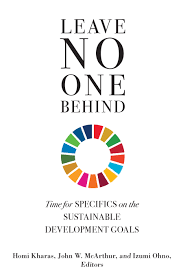The new traffic light system revealed by Prime Minister Jacinda Ardern on Friday will see freedoms restored to fully vaccinated New Zealanders
And those who haven’t received two shots of Pfizer’s Covid-19 vaccine will be largely excluded from eating at restaurants, attending concerts and festivals, and even getting a hair cut.
In other words, those who remain unvaccinated will experience a limited version of daily life in society. THIS IS MORE THAN A WARNING ITS AN EXTREME THREAT
“If you want summer, if you want to go to bars and restaurants, get vaccinated,” Ardern said. “If you want to get a hair cut, get vaccinated. If you want to go to a concert or a festival, get vaccinated.
If you want to go to a gym or sports event, get vaccinated. If you’re not vaccinated, there will be everyday things you miss out on.”
RED = Working from home encouraged. Those vaccinated can visit restaurants attends events with same limits as this on level 2. Limit gatherings limiting 10 people
ORANGE- Close to normal life for vaccinated. But is not because they cannot spends time with their unvaccinated friends at restaurants. Stricter gathering limits, no gyms or hairdressers
GREEN- Essentially normal life for vaccinated, retail hospitality all open no limits. But must be vaccinated. Those venues that don’t use vax certificates they have a limit of 2 customers
As the Government openly publicaly say they are targeting Maori and Pacifika. The Government playing its old game of racist divide, the have’s and have nots.
Divide the nations, let them destroy each other. Power play, control over all peoples. Everyone loses their freedom, compliant or not. This smells of Nazi Germany and the overbearing evilness of a Chinese Communist Regime.
This is a psychological technique that’s being used. ‘Registered clinical psychologist Dr Sarb Johal says it’s important to continue to address the concerns of people in our social circles who are unsure about getting vaccinated:
“Don’t give up on them.” In other words, even if you mentally abuse them, manipulate them and neglect them, torture their minds. Just don’t give up, keep pushing. Do the governments work for them.
This is a bullying tactic, emotionally bullying, and when a number of family members do this its called narcist. A narcist tactic to beat and bully individuals into submission, make them feel guilty, and shame them.
As this psychologist said People roll up their sleeves when they realise they have limits placed on their daily lives. “We have a few weeks, these is going to be critical”
THE FOX SAID TO THE HENS “ITS OK TO COME OUT NOW”
UN Agenda 2030 states that all global targets, there are 169 global targets and 17 SDG’s, Global development Goals. 17 of 18 refer to Climate Alarmism.
14 of 17 Global Strategy for Vaccines. Decade of Vaccines. Leave No-one behind. Everyone, everywhere at every age (UN Global Strategy of Vaccines 2011-2019)
UN Agenda 2030 states that all global targets are aspirational, with a scale or a traffic light system, accompanied by a checklist. How to monitor and assess progress, a global indicator, one that has no agreed methodology.
Thus the UN Environment, with the support from the OECH and other partner institutions, is the custodian agency responsible for developing a methodology that is universally applicable by all countries. (Using a traffic light response)
Indicating progress or not, preferences, demands etc., to accelerate UN Agenda 2030. A traffic light system for policy coherence for UN Agenda 2030 17 SDG’s and the 169 Targets
Resolution as to UN Agenda 2030-Transforming our World. Each Government sets its own targets guided by these global goals.
Benchmarking of the UN Agenda 2030 SDG’s identify qualitive intersections between the AHI Indicators and the SDG Indicators,
AHI INDICATORS -‘Asset Health Indicators’. January 2011 the World Economic Forum . It’s complex. A measurement of a condition of an asset.
The interactions are coloured based on a traffic light system. (Assessment System). Each are assigned a score between zero and three. Zero = Red, 1 = Orange, 2 = yellow (amber) and Green = 3.
In January 2011 the World Economic Forum reported the emergence of a ’New Asset Class’. Data collected on who we are, who we know, where we are, where we have been and where we plan to go.
Mining and analysing this data thus giving the ability to understand, predict where humans focus their attention and activity at the individual, group, country, global level.
This generating a new wave opportunity for economic, societal creation.
The WEF report documents the types and value of personal data collected as being vast. Profiles, demographic data, medical records, bank accounts, employment data, including our likes and dislikes and purchase history.
Our web searches and sites visited. Our tweets, emails, phone calls, photo’s, video’s as well as the coordinates of our real world locations. The list is vast and extremely variable and continues to grow.
Corporations, large companies, businesses use this data to support service and delivery of their business for their investors that can be monetised. Governments employ personal data to provide critical public services more effectively.
Researchers accelerate the development of new drugs and treatment protocols using this emergence of Asset Class system, that will spur a host of new services and applications. This is called the new ‘Oil’ a valuable resource for the 21st century. (Equals online investors)
This is known as an emergence of a new asset class touching all aspects of society. It’s core, personal data represents post- industrial opportunity. Its unprecedented complexity, velocity and has global reach.
A communications infrastructure, a personal data opportunity that will emerge in a world, where nearly everyone and everything is connected in real time, as the global elite, the Multistakeholder Capitalist wealthy greedy corporations, Bigg Tech, Big Pharm and Bayer-Monsanto will emerge in a global Eco political system, post the destruction of the Free-market Economy
For individuals, populations this will require a new way of thinking, behaving, hence we have behaviour modification in our midst, controlling people into compliance, obedience.
Re-engineering your life from the old normal to the mew normal to reward the wealthiest, elitist, leftist, socialist, Marxist, communist, most power hungry in this world today.
Green Traffic Light for instance =is given between the intersection of UN Agenda 2030/SDG indication 1.4. access to basic services for households.
Amber could denote concepts measured by Asset Health for social trust in business and government. (A measurement accumulated by the personal data collected about individuals, groups etc.,)
The Traffic Light System is a benchmark based on comparison between Asset Health domains and indicators at to UN Agenda 2030 SDG’s, based on judgements..
In some cases, SDGs fit into more than one AHI domain, and so were allocated into more than one domain. More than one indicator, traffic light colour.
With the talk of banks introducing a cashless society, which is clearly on the books. The Consumers Commissioner March 2009 documented on the WEF Report “Personal data is the new ‘Oil’ of the internet and the new currency of the digital world”
The World Economic Forum document states “Indeed, rethinking the central importance of the individual is fundamental to the transformational nature of this opportunity, this will spur solutions and insights”
As personal data increasingly becomes a critical course of innovation and value, business boundaries are being redrawn. Profit and Personal Data for large Multistakeholder Capitalist Corporations and large businesses.
The WEF back in 2009 reported that tensions were rising about the misuse of data, general public were becoming uneasy ‘about what they know about us’. There are fundamental questions about privacy, property, global governance, human rights.
However the WEF states “we cannot just hit the pause button” and let these issues sort themselves. “Building this legal, cultural, technological and economic infrastructure enabling the development of this personal data eco-system is vitally important.”
“It is in this context that the World Economic Forum launched a project entitled “Rethinking Personal Data” in 2010.
The intent of this multiyear project is to bring together a diverse set of stakeholders – private companies, public sector representatives, end user privacy and rights groups, academics and topic experts.
The aim is to deepen the collective understanding of how a principled, collaborative and balanced personal data ecosystem can evolve.
NZ Parliament has introduced the ‘Digital Identity Trust Framework Bill 2021 a few days ago’, and introduced the ‘Traffic Lights Response’ which relates to UN Agenda 2030.
On the 13th June 2019, the UN and the WEF signed an official partnership agreement to accelerate UN Agenda 2030. The WEF takeover of the UN was strongly condemned as a Global Public-Private Governance of the World
FIAN INTERNATIONAL (For the right to food and nutrition) stated that hundreds of CSO’s reiterate condemnation of the partnership[ between the corporate world with the UN. They called on the UN Secretary General to end it.
The agreement grants transnational corporations preferential access to the UN System at the expense of UN Member States and public interest actors.
That this partnership undermines the mandate of the UN as well as its independence. “This WEF and UN agreement formalises an extremely disturbing corporate capture of the UN.
It moves the world dangerously towards a privatised, undemocratic global governance”. Corporate influence has been long wielded in the UN System, however under the terms of 2019 of the UN-WEF partnership, the UN will be permanently associated with transnational corporations.
In the long term it will allow the WEF to be advisors to a One World Governance. Corporations in the global industrial food chain alone destroy 75 billion tons of topsoil annually, are responsible for the loss of 7.5 million hectares of forests. Leaves 3.9 billion unfed malnourished people.
The WEF represents the interests of those who destroy the environment and abuse Human Rights and personal property rights.
In 2019, Ardern speaking at the WEF Davos Meeting stated “While the government’s plans to move away from traditional methods of measuring growth and development are in keeping with a global push for a more purposeful capitalism, new metrics may be difficult to quantify and could take years to refine.
2019 well a couple of years and we are there. 2021.Her National State of Happiness Report. ..UN Agenda 2030 14 out of 17 global development goals -Here we are living the ‘UN Global Strategy for Vaccines 2011-2019, Leave No-one Behind. Everyone, everywhere at every age. 2020-2030 The Decade of Vaccines. Forget the sheep enter the lions.
UN Agenda 2030, leave no-one behind, everyone, everywhere at every age. Accelerate UN Agenda 2030 calculations. Traffic Light Response. And Ardern’s Zero Carbons Eco-politics.
Controlling, re-engineering the minds of everyone in the world. Ardern and her political cronies destroying, being traitors to all New Zealanders in favour of a Private-Public One World Governance.
That is destroying our country, as we all sit on the edge of a suicidal cliff, the edge of a precipice. THIS IS CONTROL, COMPLAINCE, SLAVERY, DICTATORSHIP, COMMUNISM. USING THE TRAFFIC LIGHT RESPONSE
https://www.fian.org/en/press-release/article/wef-takeover-of-un-strongly-condemned-2273
https://www3.weforum.org/docs/WEF_ITTC_PersonalDataNewAsset_Report_2011.pdf
https://www.sdg16hub.org/system/files/2019-05/The-Role-of-Multi-Stakeholder-Partnerships-in-Implementing-the-2030-Agenda-1-1.pdf
Blog Mini Series on MSPs – 3
...





